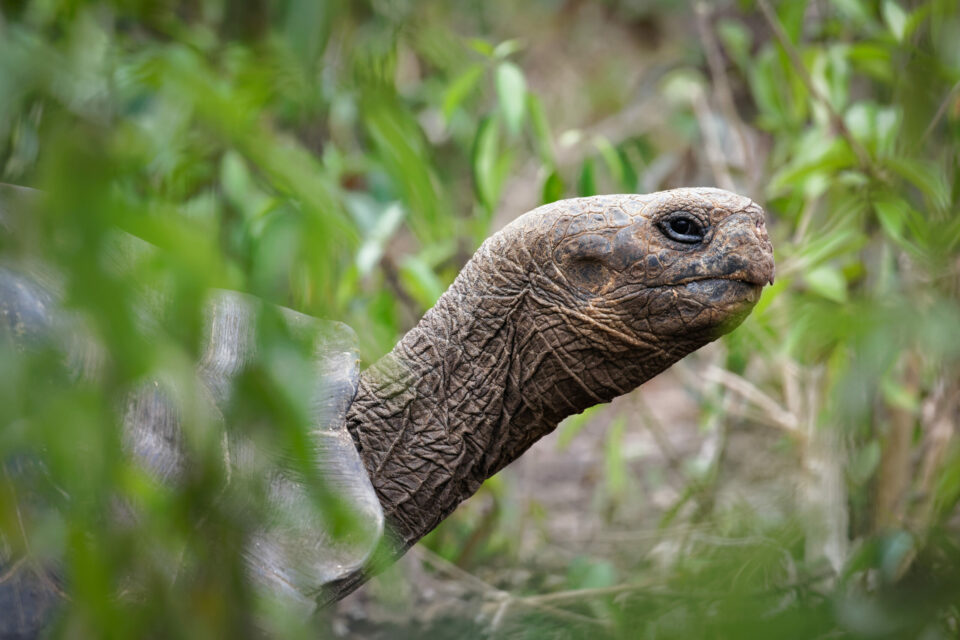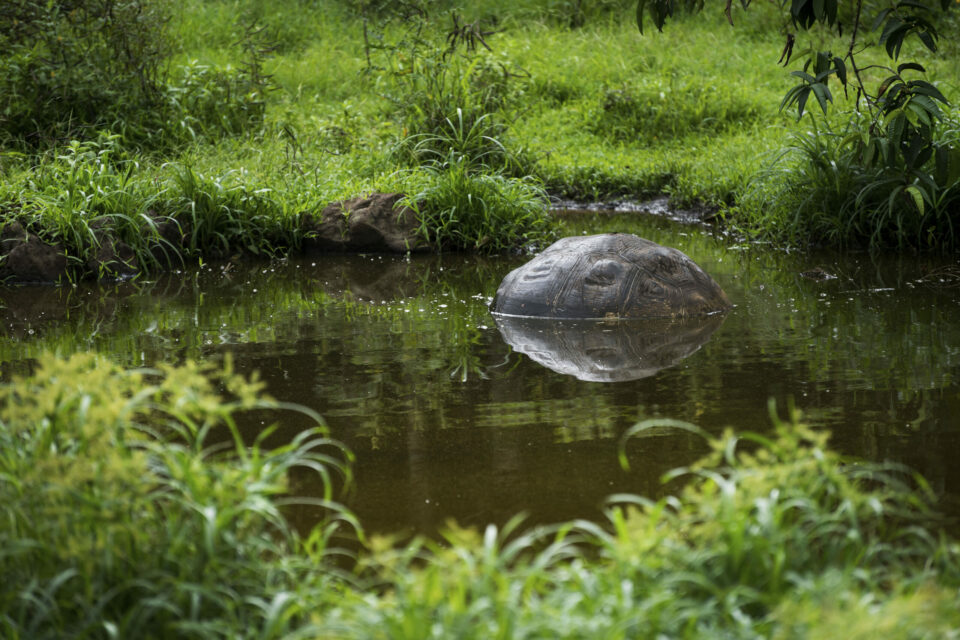

Studying Galapagos giant tortoise health on Alcedo Volcano
Last July, members of the Galapagos Tortoise Movement Ecology Programme spent a week in Alcedo Volcano, one of the biggest volcanoes of the Galapagos Islands and home of the largest population of giant tortoises.
Our main goals were to collect the telemetry data from the 11 tortoises with our GPS tags that we have been studying for the past eight years, and to collect samples of up to 70 tortoises, to better understand their health status in this remote natural heritage in the middle of the Pacific Ocean. In order to conserve these giants in their natural habitat, it is extremely important to understand and minimize the health threats they face.
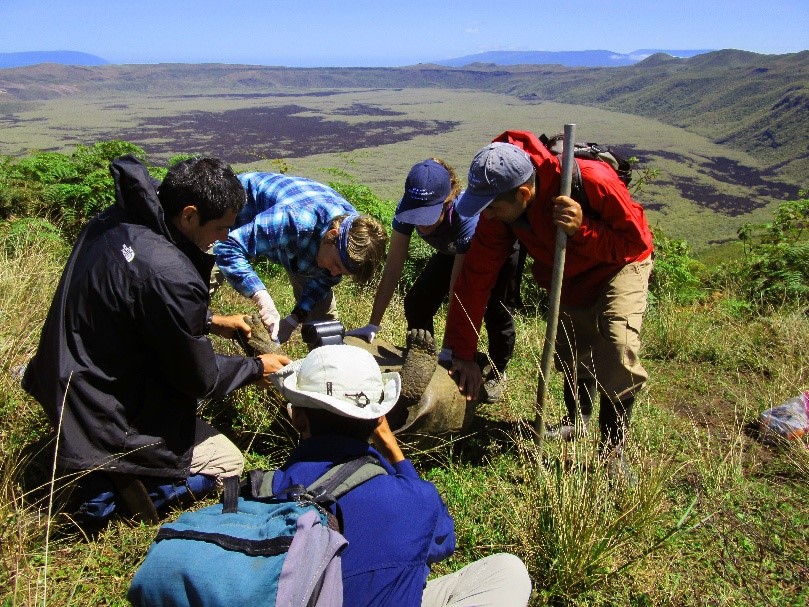
The team sampling a tortoise at the edge of the crater by Photo © Surya Castillo, CDF
The trip was actually started months in advance, by obtaining all permits, buying the equipment and supplies and performing the quarantine. Finally, on July 17th the team sailed at 5h00 on its way to Isabela Island. Carrying medical equipment, food, oil, a generator, a centrifuge and a portable cooler on our backs, we walked for seven hours to the crater rim. Our work was being supervised by Dr. Sharon Deem. With more than 20 years of experience working on conservation medicine projects with wildlife species across the globe, she was excited to be at Alcedo.
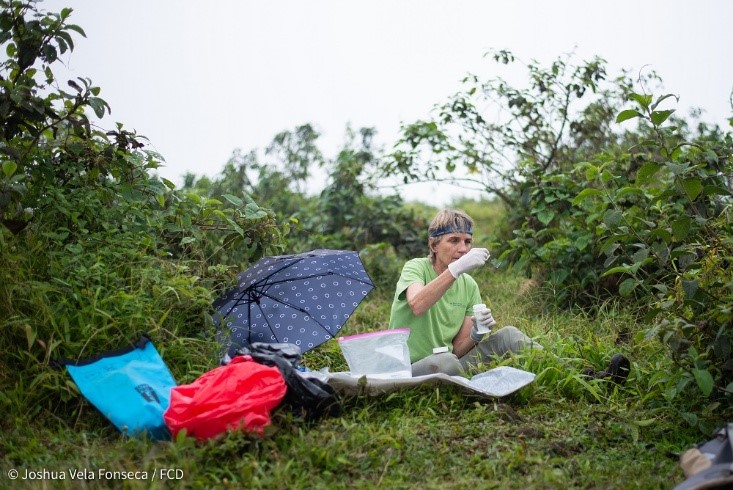
Dr. Sharon Deem processing blood samples in the field © Joshua Vela Fonseca
Days went very fast. Early breakfast followed by long hikes collecting samples from tortoises along the edge of the crater; often being battered by the wind and ‘garúa’ until the sun would suddenly appear at midday. At that moment, on most days, the clouds would disappear and the volcano would show its majesty. Big fumaroles like heavy sighs came from the inside of the crater and countless tortoise carapaces of all sizes shined under the sun. Curious Galapagos hawks surprised us with their aerial dances, attempting to reach our heads. Work extended until the afternoon, when we all went back to our improvised home, carrying samples from the tortoises. Some of the samples, such as the blood, needed to be processed immediately, at our makeshift laboratory. Equipped with a torch, a pair of gloves and a lot of patience, the veterinary contingent of the team, Drs. Deem, Nieto Claudin and Surya, worked for the next few hours processing all samples and collecting the data. The portable generator was also working full-time, ensuring power supply to use the lab equipment and keeping the samples cold within the freezer.
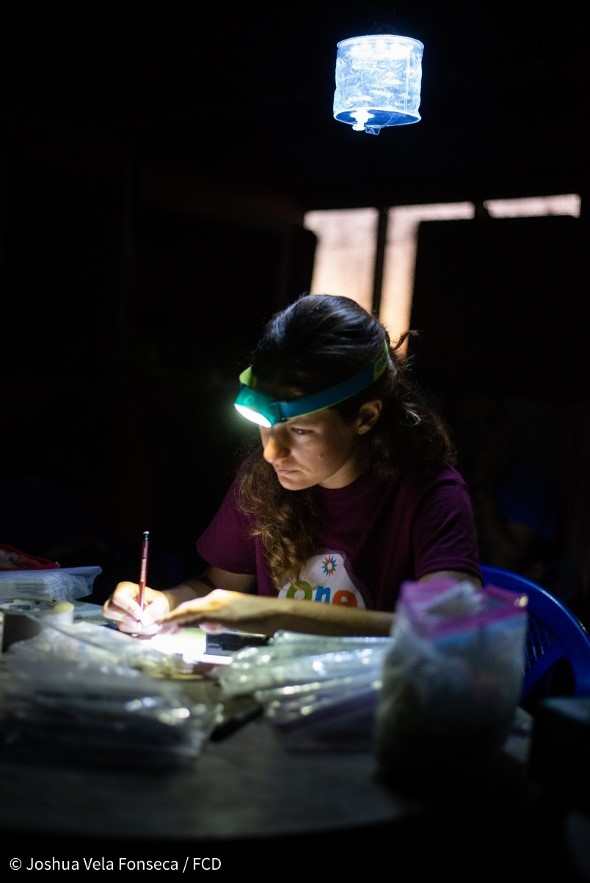
Dr. Nieto Claudin processing samples at night © Joshua Vela Fonseca
Five days of intensive fieldwork, long hikes to find tagged tortoises and a number of hours at night processing samples gave us a total of 71 sampled tortoises. Also, eight of the 11 tortoises tagged with GPS devices were found and their data downloaded. On the seventh day, it was time to go back to Santa Cruz. We set out at daybreak, again with backpacks full of equipment and, more importantly, with biological samples and photos. The volcano gave us one last gift: a stunning view of the whole crater and over the skyline, all volcanoes from Isabela, Fernandina and Santiago Islands. All our effort was worthwhile.
This programme is a multi-institutional collaboration among the Charles Darwin Foundation, the Max Planck Institute of Ornithology, the Galapagos National Park, Saint Louis Zoo Institute for Conservation Medicine, the Houston Zoo and Galapagos Conservation Trust.
Find out more about the Giant Tortoise Movement Ecology Programme here. Why not buy one of our Giant Tortoise digital adoptions, donate to our tortoise appeal or become a GCT member and help fund the conservation of this species for years to come!
Related articles


The return of the Floreana giant tortoise
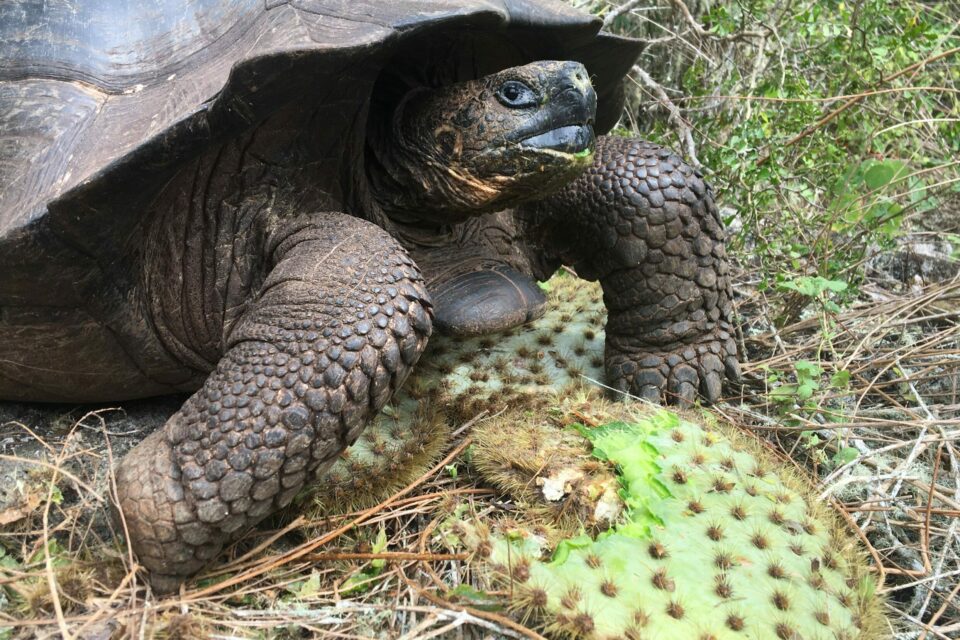
Galapagos giant tortoises: An update from the field
